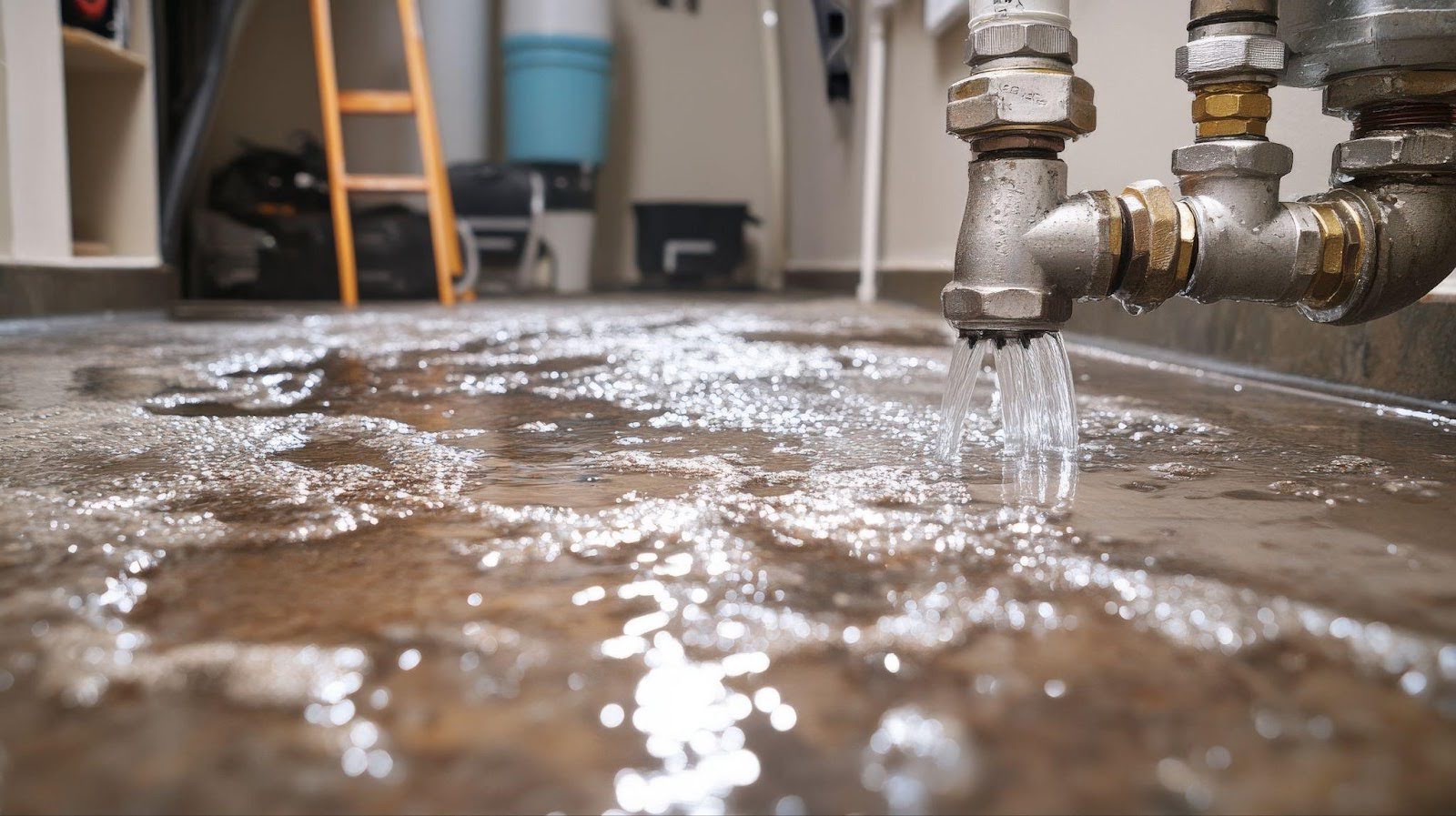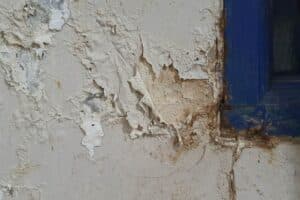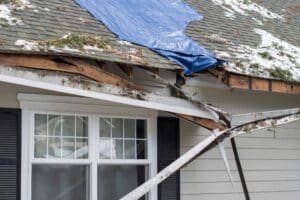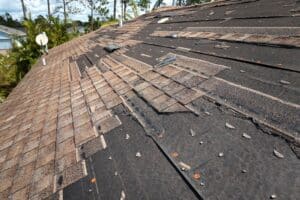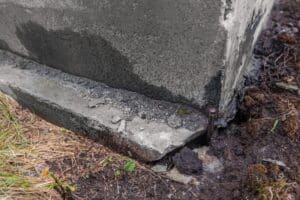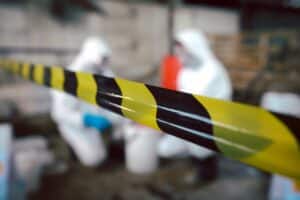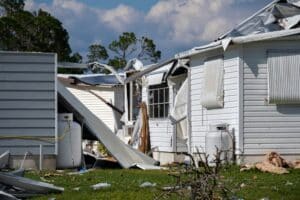Addressing basement water damage promptly maintains your home’s structural integrity and ensures a healthy living environment. Left unattended, water damage causes serious structural problems and promotes the growth of mold and mildew, posing health risks to your family.
Water infiltrates your basement in various ways, each presenting unique challenges. Heavy rainfall or overflow from nearby bodies of water quickly saturate your basement, while faulty plumbing or cracks in foundation walls gradually introduce water, causing progressive damage.
Additionally, high humidity levels, especially common in poorly ventilated basements, create a damp environment conducive to water damage and mold growth.
Early recognition of these causes and signs of water damage is vital to mitigate more severe and costly damage. This guide provides essential steps to effectively repair basement water damage, ensuring your space remains dry, clean, and safe for years to come.
Identifying the source of water damage
Effectively fixing water damage in your basement begins by pinpointing the exact source of the moisture. This section offers practical advice on detecting signs of water damage and techniques for tracing where the moisture originates.
Detection tips
To identify water damage in your basement, look for several key signs:
Water stains
Search for discolorations on walls, ceilings, and floors. Water stains typically appear darker and may spread over time.
Peeling paint
If water seeps into wall materials, it causes paint and wallpaper to peel or bubble, clearly indicating moisture issues.
Musty odors
A persistent musty smell often signals the presence of mold or mildew, which usually arises from prolonged dampness.
Conducting regular inspections helps you catch these signs early, potentially saving you from more extensive and costly repairs.
Finding the source
After spotting signs of water damage, the next step is to trace the moisture back to its source, which could be external, from groundwater, or internal.
External flooding
Inspect for signs of water pooling around your foundation after rainstorms. Check the slope of your yard; improper grading directs water toward your home rather than away from it.
Groundwater seepage
Look for wet spots on walls and floors, especially after heavy rains. Groundwater seeps through cracks in the foundation if it’s not properly sealed.
Internal leaks
Check all pipes and fixtures in your basement for leaks, focusing on joints and connection points. Also, examine appliances like washers or water heaters for any signs of leaks.
Using these detection and source-tracing techniques allows you to take targeted actions to address the root cause of basement water damage, setting the stage for effective repairs and mitigation strategies.
Stopping further water entry
Once you’ve identified the source of water damage in your basement, the next crucial step is to halt further water entry. This process requires both immediate actions to stop active leaks and long-term solutions to prevent future issues.
Immediate actions
When you discover water entering your basement, taking swift action prevents further damage.
Shut off water lines
Immediately locate and shut off the main water valve if water entry is due to a burst pipe or leak. This stops all water flow, allowing you to assess and repair damage without the complication of ongoing water entry.
Fix leaks promptly
Check pipes, fixtures, and connections for leaks. Tighten connections or replace damaged sections of piping as necessary. For leaks around windows or in walls, apply sealants or patching compounds to seal them off.
Long-term solutions
After managing immediate leaks, implement long-term strategies to prevent future water from entering your basement.
Improve drainage
Ensure your property’s grading directs water away from the foundation. Extend downspouts to carry gutter water at least five feet from your home. If surface water is a persistent problem, consider installing French drains around your home’s perimeter.
Waterproof walls
Apply waterproofing compounds to both the interior and exterior of your basement walls. For comprehensive protection, consider installing a waterproof membrane outside of the foundation walls during landscaping projects.
Install sump pumps or backwater valves
Sump pumps effectively control groundwater levels by pumping water away from your foundation. Backwater valves are crucial for preventing sewage backups during heavy rainfall, especially in areas prone to such events.
Drying out the basement
After halting water entry, the next critical step is to dry out your basement effectively to prevent mold growth and further damage. Here’s a guide to the best methods and tools for drying your basement, along with vital safety precautions.
Methods and tools
Use dehumidifiers
Place dehumidifiers throughout the basement to pull moisture from the air, which helps prevent mold and mildew. For extensive areas, you may need multiple units.
Set up fans and air movers
Strategically arrange fans and air movers to circulate air and accelerate the drying process. Ensure airflow covers all damp surfaces, and use fans to push air out through doors or windows to facilitate moisture escape.
Apply heat
Raising the air temperature can speed up moisture evaporation. Use portable heaters to increase the temperature, ensuring adequate ventilation to prevent condensation.
Safety precautions
Safety is paramount when using electrical devices to dry out your basement.
Electrical safety
Check all electrical cords and devices for damage and keep them away from wet areas. Plug all devices into ground fault circuit interrupter (GFCI) outlets to prevent electrical shocks.
Handling contaminated water
Wear protective clothing, including gloves and boots, if there’s a chance the basement water is contaminated by sewage or chemicals. If contamination is severe, consider enlisting professional help.
Ensure ventilation
Maintain good ventilation while drying the area to avoid inhaling potentially harmful fumes from drying materials like paint or other substances that may have been water-damaged.
Cleaning and disinfecting
Once your basement is dry, the next steps involve thorough cleaning and disinfecting to ensure the area is free of contaminants and to prevent mold growth.
Proper cleaning techniques
Remove debris
Begin by clearing out any debris and damaged items. Carefully bag and dispose of materials that cannot be salvaged, especially those that are water-damaged or mold-infested.
Clean surfaces
Use a vacuum equipped with a HEPA filter to clean floors, walls, and other surfaces before washing them. This step helps capture fine particulates and prevents them from becoming airborne. After vacuuming, scrub all surfaces with soapy water using a stiff brush to remove any remaining dirt and grime.
Address specific stains
For tougher stains or emerging mold, apply a mixture of bleach and water (one cup of bleach per gallon of water) or a commercial mold remover. Make sure the area is well-ventilated when using potent cleaning solutions.
Disinfection processes
Disinfecting the basement is essential to eliminate any lingering mold spores and bacteria.
Choose the right disinfectant
Select an EPA-approved disinfectant effective against mold and mildew. Follow the product’s instructions carefully to ensure it works effectively.
Apply disinfectant properly
Thoroughly spray or apply the disinfectant to all surfaces, focusing on corners and crevices where mold tends to accumulate. Allow the disinfectant to sit for the duration specified on the product label to kill all spores and bacteria.
Ventilate and dry
Maintain good ventilation in the basement during and after disinfection. Ensure all surfaces dry completely to prevent mold from returning.
Preventive measures
After restoring your basement from water damage, be sure to implement preventive measures to protect against future issues. Regular maintenance and strategic improvements significantly enhance your basement’s resistance to water damage. Here are actionable maintenance tips and improvement suggestions to keep your basement dry and damage-free.
Inspect regularly
Conduct bi-annual inspections of your basement to check for signs of moisture, such as damp spots, mold, or efflorescence. Catching issues early can prevent them from escalating.
Clean gutters and downspouts
Keep your gutters clear of debris and ensure that downspouts direct water at least five feet away from your home’s foundation. This prevents water from pooling around your house and seeping into the basement.
Test sump pumps
Regularly test your sump pump to ensure it is functioning properly, especially before the rainy season, to prevent groundwater and floodwater from entering your basement.
Improvement suggestions
Apply waterproof paint to your basement walls and floors, and consider installing a waterproof membrane on the exterior walls for added protection. Proper sealing blocks moisture from entering through cracks and crevices.
Install a dehumidifier or enhance your existing HVAC system to better control humidity levels in your basement. Effective ventilation helps prevent condensation and mold growth, which are prevalent in damp basements.
Modify the landscaping around your home to ensure proper drainage away from the foundation. Installing French drains or adjusting soil grading can effectively redirect water.
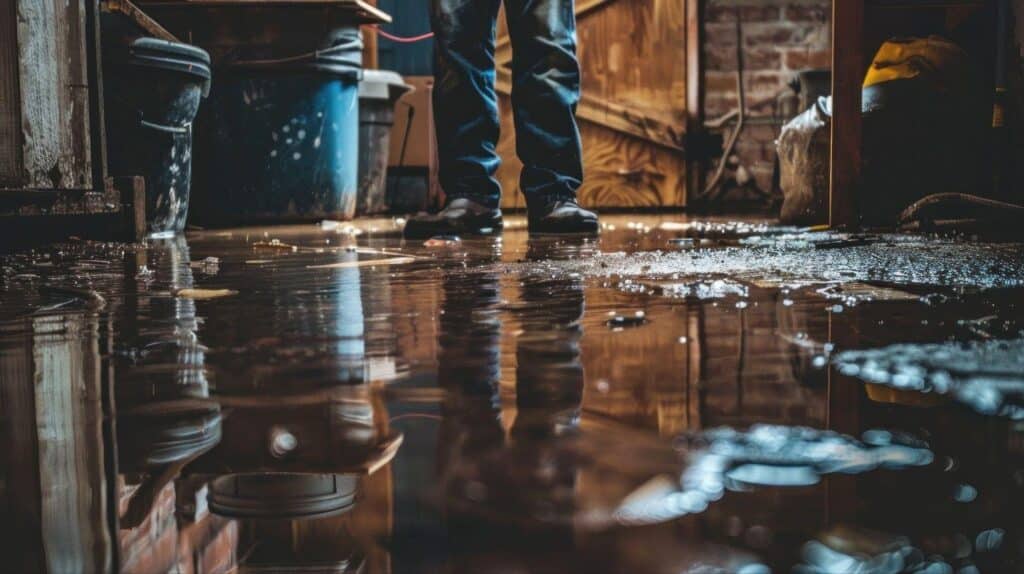
Let Black Diamond help fix & protect your basement
For extensive water damage or professional assurance, contact Black Diamond Water Damage and Disaster Restoration. Our team specializes in comprehensive water damage restoration and prevention, providing dependable services to restore and protect your home.
Trust Black Diamond to expertly handle your home’s water damage challenges.

